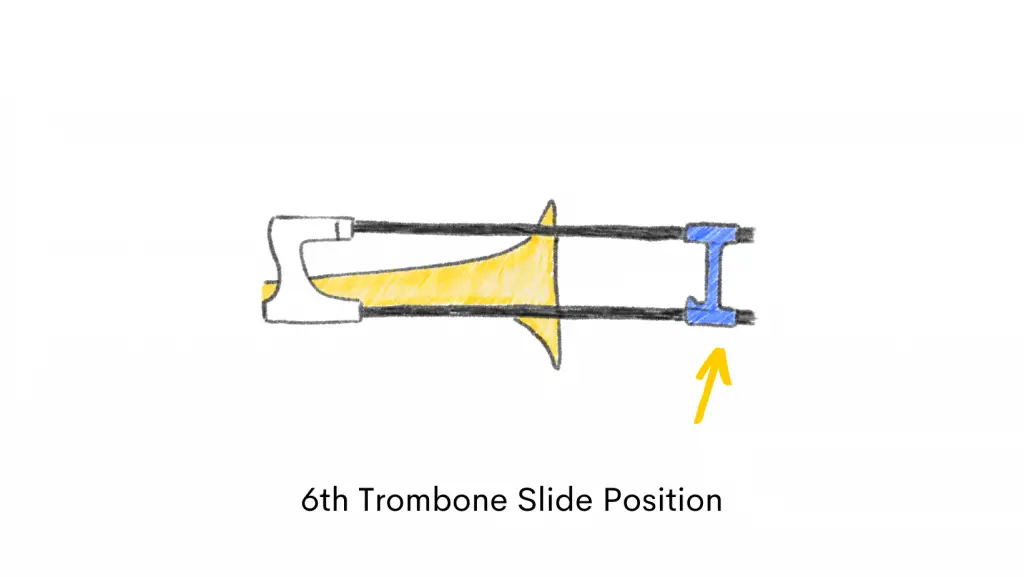Trombone: The 6th Slide Position
The sixth slide position on a trombone is just before the stockings.

The 6th slide position trombone is one of the longer slide positions and is located just before the stockings, which are the braces that hold the slide onto the main body of the instrument. This position is used to produce notes that are even lower in pitch than those produced in the fifth slide position, and it requires the player to extend the slide even further than in the previous positions.
The trombone slide is made up of two parallel tubes that move relative to each other to change the length of the tubing. Each slide position corresponds to a specific length of tubing, and the further the slide is extended, the lower the pitch of the note produced.
To play in the sixth slide position, the player must first locate the position of the stockings on the instrument. The position can be marked on the slide to serve as a reference point for the player. The sixth slide position falls just before the stockings, which means that the slide must be fully extended to reach the correct length of tubing.
Once in the sixth slide position, the player must adjust their embouchure to compensate for the lower pitch of the notes produced. The embouchure is the way in which the player uses their lips, tongue, and mouth to produce sound. In the sixth slide position, the player must use an even looser embouchure than in the fifth position to produce the desired pitch.
The sixth slide position is used extensively in a variety of musical genres. It is commonly used in classical music to produce low notes in orchestral music or to play bass lines in chamber music. In jazz and popular music, it is used to create a deep, rich tone or to play low notes in a bassline.
Playing in the sixth slide position can be challenging as it requires careful attention to intonation, or the accuracy of the pitch produced. The player must be aware of the position of their slide and make fine adjustments to produce accurate pitches. Small variations in the slide position can significantly affect the pitch produced.
To master the sixth slide position, the player must develop a keen sense of pitch and a strong awareness of the position of their slide. Regular practice is essential to achieve accurate intonation and fluid movement between slide positions.
The sixth slide position is also crucial to playing certain techniques on the trombone, such as glissando or smear. Both techniques require the player to move fluidly between slide positions, and the sixth slide position is an essential part of this process.
In addition to the sixth slide position, trombone players must also be proficient in the other six slide positions to play the full range of notes available on the instrument. Each position requires precise slide placement and embouchure control, and the player must be able to move fluidly between positions to play smoothly and accurately.
